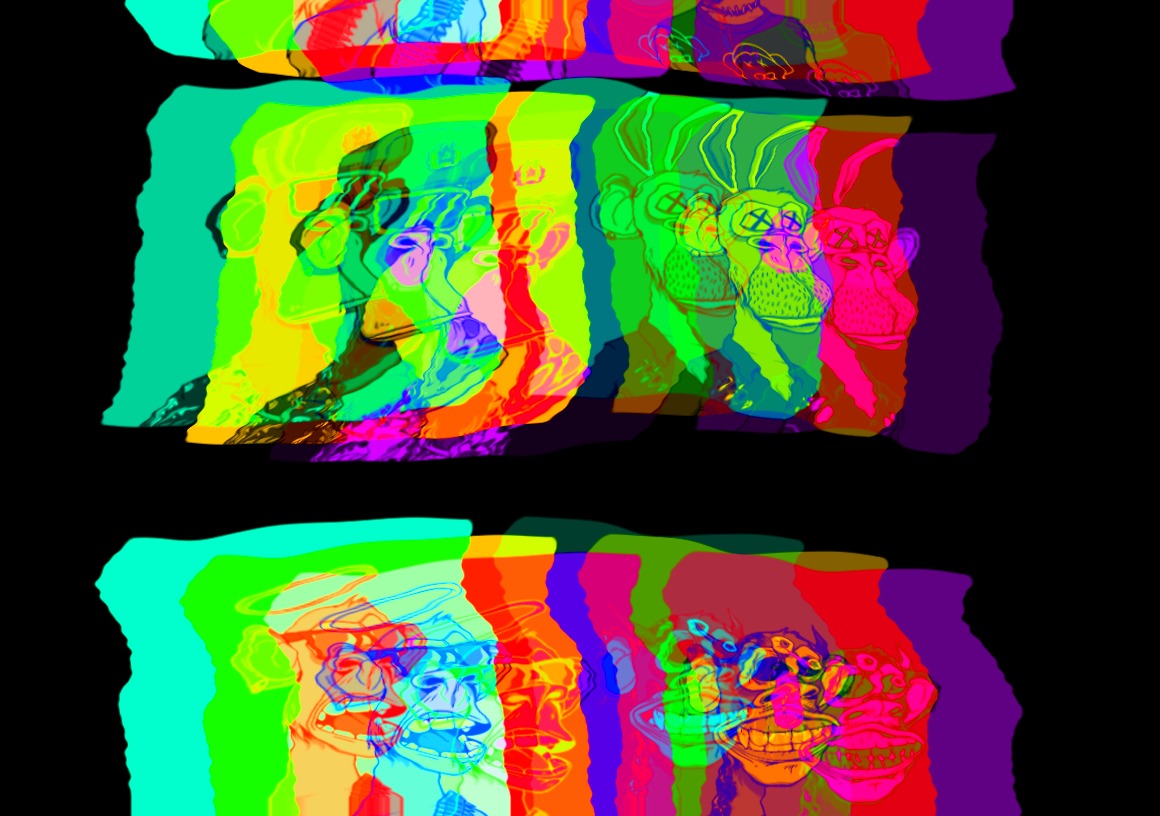30/11/2021 Planet of the Bored Apes
Bored Ape Yacht Club has created an easily mimicked model for mainstream adoption. But that doesn’t mean they’ll remain king of the mountain.

The tech behind NFTs, or non-fungible tokens, hasn’t changed all that much since the development of the ERC-721 standard – the coding framework on which most popular crypto collectibles are built.
That’s because until 2021, NFTs were mostly a niche curiosity for crypto enthusiasts. Even with the rise of CryptoKitties in 2017, NFTs didn’t immediately conjure up any cultural or aesthetic reference points beyond the broader crypto ecosystem – despite becoming a media hang-up.
Arts
 (0)
(0)
 (0)
(0)
https://www.coindesk.com/tech/2021/11/29/planet-of-the-bored-apes/
Interesting NFTs
Fidenza #772
Fidenza is by far my most versatile algorithm to date. Although the program stays focused on structured curves and blocks, the varieties of scale, organization, texture, and color usage it can employ create a wide array of generative possibilities. Additional project feature(s) => Scale:Jumbo, Turbulence:Low, Colors:Cool, Have Margin:Yes, Spiral:Yes, Soft Shapes:No, Super Blocks:No, Collision Check:No Overlap, Outlined:No, Shape Angles:Curved, Density:High

Verifactory
The factory process behind the making of a verification badge.
10-second loop, 30 fps.
Created using Cinema4D, X-Particles, TurbulenceFD, Redshift, and After Effects.
ℤ
Things are not always as they seem. Living in poverty is like serving a sentence in a prison with invisible bars. The keys are in plain sight, yet impossible to reach.
Screen time captivates us with its addictive dopamine triggers, plucking at our attention span until we are no longer aware of the present...
What if both worlds collide?
Hand-rendered acrylics on bristol board scanned and converted into a digital image.
The Pixel
The Pixel is a single pixel statement. It is created to validate.
The Pixel is a digitally native artwork visually represented by a single pixel (1x1). It is a token that signs the most basic unit of a digital image in a traditional global auction house. It is a tiny mark to carry digitally native art to a potential future history.
Dali Serp Otaku Recessive
Good day! Dali Serp Otaku Recessive here. I'm here to enjoy watching Stranger Things and eating lasagna. My friends describe me as "brilliant." It's... accurate. I hope we can be pawmates.